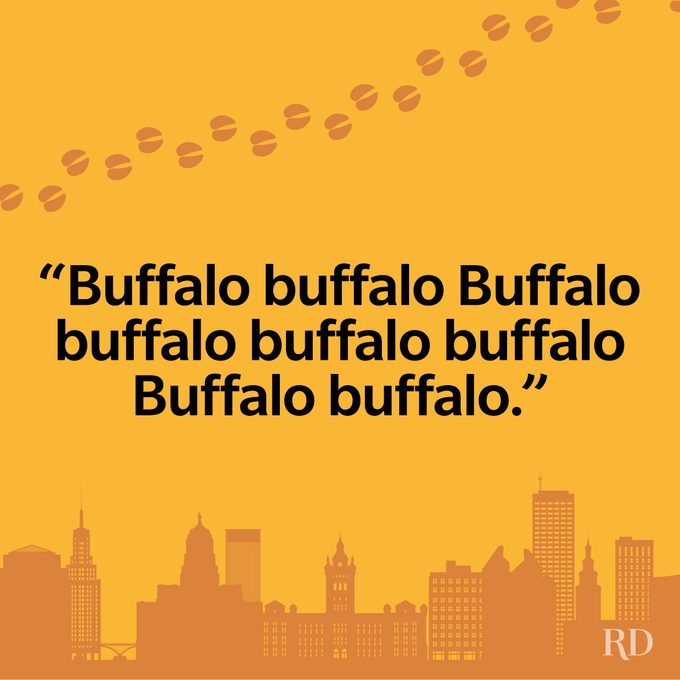Put on your thinking caps. The longest sentence using one word is a stumper.

This Is the Longest Sentence Using Just One Word

As one of the world’s most spoken languages, English has many quirks and fascinating trivia. For example, did you know the longest word in English is 189,819 letters long? It’s also known for long sentences, especially within literature (most famously the monster-sized ones in James Joyce’s Ulysses). We can even make entire sentences using the same word, which leads us to ask: What is the longest sentence using one word? Have you ever wondered?
It’s an odd query, we admit. But once you know what the sentence is, and how it could possibly be created with a single word, you’ll be the ringer of every trivia contest—or at the very least, the categories about the English language. Reader’s Digest explains below.
Get Reader’s Digest’s Read Up newsletter for more grammar, humor, travel, tech, cleaning and fun facts all week long.
What’s the longest sentence using one word?
Are you ready for this? The longest sentence using one word is a mouthful: Buffalo buffalo Buffalo buffalo buffalo buffalo Buffalo buffalo.
If this sounds totally ridiculous (of course it does), it all comes down to the fact that the word buffalo has three distinct meanings.
- Buffalo, the animal
- Buffalo, the city in New York
- Buffalo, to deceive, trick or confuse
That last meaning definitely applies here, but let’s break it down by separating the sentence into three segments and walking through them one by one.
Buffalo buffalo …
The sentence starts out easy enough. The first two words in the sentence are understood to mean “buffalo from Buffalo, NY.” This phrasing works because in English, we can drop from and instead use the city of Buffalo as an adjective to describe which buffalo we are talking about.
For the next segment of the sentence, let’s add a relative pronoun, that, which will help you see where the sentence is going next.
Buffalo buffalo [that] Buffalo buffalo buffalo …
Okay, so we have our buffalo from Buffalo. The next part of the sentence describes a different set of Buffalo buffalo. And what are these pesky new animals doing? Well, remember the third definition of buffalo: to trick or deceive. That’s right, they’re buffaloing (tricking) our original Buffalo buffalo!
In English, we can omit relative pronouns like that, so the sentence up to this point can be simply and grammatically written as five repetitions of the word buffalo. (It helps that buffalo can be used as a plural.)
With us so far? Here’s the big finale:
Buffalo buffalo [that] Buffalo buffalo buffalo [also] buffalo Buffalo buffalo!
The last segment of the longest sentence using one word describes yet another group of buffalo from Buffalo. These poor creatures are getting tricked by the first group, which can be more easily seen by adding the adverb also. (Adverbs add clarity and context, but aren’t required, so the sentence is grammatically correct without it.)
Let’s walk through the buffalo shenanigans one last time.
Buffalo buffalo Buffalo buffalo buffalo buffalo Buffalo buffalo!

Try saying it in your head with pauses and the implied words we used earlier. Here’s the final explainer:
The first group of Buffalo buffalo, which are being deceived by the second group of Buffalo buffalo, are in turn tricking the third group of Buffalo buffalo. Put another way, the second group bullies the first group and the first group bullies the third group—which, unlike the others, does not respond in kind.
Why trust us
At Reader’s Digest, we’re committed to producing high-quality content by writers with expertise and experience in their field in consultation with relevant, qualified experts. We rely on reputable primary sources, including government and professional organizations and academic institutions as well as our writers’ personal experiences where appropriate. We verify all facts and data, back them with credible sourcing and revisit them over time to ensure they remain accurate and up to date. Read more about our team, our contributors and our editorial policies.





















